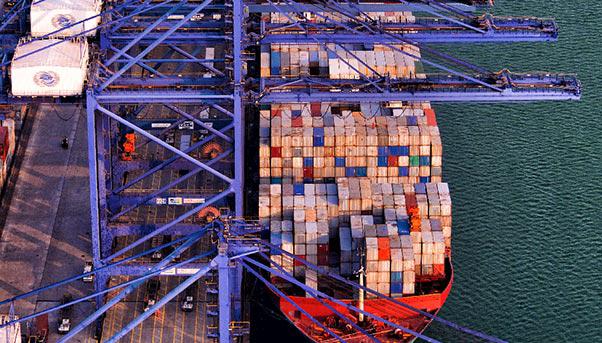
A strip of land cut in two by human ingenuity to join two oceans, to unite the world. August 15th is a key date not just for the state of Panama in Central America. It represents the strategic turning point for the development of world trade, for passenger traffic, for the approach of continents. When it was inaugurated, on that Mid-August of 1914, the Panama Canal changed history, inaugurating the intercontinental era, uniting the Atlantic with the Pacific. One hundred and two years later, in 2016, the history changed a second time through that stretch of 50 miles transformed into a new waterway that, with the transit of the mega-ships “New Panamax”, opened the global era.
One million and 200 thousand ship have passed in 104 years through the two Panama waterways. Translated into numbers, the impact was, to say the least, cyclopic. Boats of all kinds with every category of goods on board: grains, wood, gold, steel, cement, gas. Ship of all sizes, from small sailboats to cruise liners. With an average, from a statistic point of view, of over 30 ships a day, every day.
The flags of the Republic of Panama have celebrated the anniversary of the ocean crossing, while the greatest ship of all times were passing through the New Panamax Canal built by the European consortium of which Salini Impregilo was the operational leader. The super boat Maria Energy, a giant for the transport of liquefied natural gas (LNG), has traveled the new locks from the Atlantic to the Pacific with the number 4,000 printed on the ticket.
A result celebrated by local authorities as an “extra target“, that is well beyond the requirements of the project. The new Panama Canal, since its entry into service, has seen over two thousand container ships pass, which today account for 52% of the total transit, over one thousand oil tankers and 400 LNG vessels, which were prevented – due to size and safety – from passing through the old canal.

The new canal is milling one record after another. Symbolically the most impressive ship that passed through the New Panamax Canal was the Theodore Roosevelt of the French shipping company CMA CGM: 365.9 meters long, 48.2 wide, and with 14.863 containers on board. It is named after the American president who supported and celebrated the construction of the first Panama Canal, commissioning the American military genius for the enterprise.
The global era designs new and well-defined routes. Today, 36% of the total ship that pass through the Panama Canal, that is more than a third, unite Asia with the Eastern coasts of North America, connects the crowded ports of Shanghai, Singapore, Shenzhen, Hong Kong, with the big ports of New York, Baltimore, Savannah, Miami. Thanks to the interoceanic cut, shipping companies avoid the exhausting circumnavigation through the Strait of Magellan or the very long journey through the Suez Canal. According to the data of the Panama Canal Authority, in second place with 10% of the total ship transit, is an increasing connection between the above-mentioned Eastern ports of North America with Western ports of South America, especially with San Antonio in Chile.
The list of goods traces new horizons. In 2017, through the two Panama canals, goods transited for 155 million long tons (1 long ton = 1,016.1 Kg). In one year, new cars and trucks have gone from one continent to another, for a total of one and a half million tons. One million tons of unprocessed agricultural products, 53 million tons of oil, half a million tons of sugar.
The possibility to travel opens new boundaries. Last May 14th, the ship Norwegian Bliss, a giant cruise ship measuring 325.9 meters long, 41.4 meters wide, traveled from Miami through the new Panama Canal to the California and Mexican coasts with 4 thousand tourists on board . Sailing from the Atlantic to the Pacific, Norwegian Bliss set the record for the biggest cruise ship in history. A record destined to last very little. In just one year, 320,000 passengers crossed the isthmus, out of 250 cruise ships. Always bigger.

